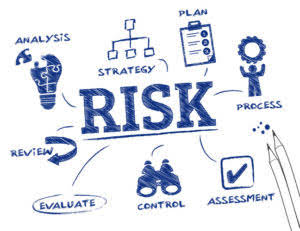Financial Statements: Balance, Income, Cash Flow, and Equity

Looking at the same period one year earlier, we can see that the year-on-year change in equity was a decrease of $25.15 billion. The balance sheet shows this decrease is due to both a reduction in assets and an increase in total liabilities. Company equity is an essential metric when determining the return being generated versus the total amount invested by equity investors. If a company owes more than it has in assets, shareholders’ equity can actually be negative. This can be a warning sign for potential investors, since it makes it less likely they’ll actually get money back on their investment. It’s rare for shareholders’ equity to be equal to a company’s assets, since it’s almost impossible for a company to function without some sort of liabilities.
AerCap Holdings N.V. Reports Financial Results for Second Quarter 2023 – PR Newswire
AerCap Holdings N.V. Reports Financial Results for Second Quarter 2023.
Posted: Mon, 31 Jul 2023 07:00:00 GMT [source]
The amount of equity one has in their residence represents how much of the home they own outright by subtracting from the mortgage debt owed. Equity on a property or home stems from payments made against a mortgage, including a down payment and increases in property value. Everything listed is an item that the company has control over and can use to run the business. Over 1.8 million professionals use CFI to learn accounting, financial analysis, modeling and more.
Balance Sheets 101: What Goes On a Balance Sheet?
If they don’t balance, there may be some problems, including incorrect or misplaced data, inventory or exchange rate errors, or miscalculations. Since equity accounts for total assets and total liabilities, cash and cash equivalents would only represent a small piece of a company’s financial picture. These figures can all be found on a company’s balance sheet for a company.

While they may seem similar, the current portion of long-term debt is specifically the portion due within this year of a piece of debt that has a maturity of more than one year. For example, if a company takes on a bank loan to be paid off in 5-years, this account will include the portion of that loan due in the next year. Includes non-AP obligations that are due within one year’s time or within one operating cycle for the company (whichever is longest). Notes payable may also have a long-term version, which includes notes with a maturity of more than one year.
Revenue
This information is useful to analyze to determine how much money is being retained by the company for future growth as opposed to being distributed externally. Aside from stock (common, preferred, and treasury) components, the SE statement includes retained earnings, unrealized gains and losses, and contributed (additional paid-up) capital. Positive shareholder equity means the company has enough assets to cover its liabilities. Negative shareholder equity means that the company’s liabilities exceed its assets.
- After all, even conservatively managed companies with no debt will still have to pay bills and taxes.
- The balance sheet provides an overview of the state of a company’s finances at a moment in time.
- Thus, shareholder equity is equal to a company’s total assets minus its total liabilities.
- Instead of reporting just $23.5 billion of net income, ExxonMobil reports nearly $26 billion of total income when considering other comprehensive income.
- The financial statements are used by investors, market analysts, and creditors to evaluate a company’s financial health and earnings potential.
- To prepare the financial statements, a company will look at the adjusted trial balance for account information.
The value of liabilities is the sum of each current and non-current liability on the balance sheet. Common liability accounts include lines of credit, accounts payable, short-term debt, deferred revenue, long-term debt, capital leases, and any fixed financial commitment. If you want to calculate the value of a company’s equity, you can find the information you need from total equity its balance sheet. Locate the total liabilities and subtract that figure from the total assets to give you the total equity. Shareholders consider this to be an important metric because the higher the equity, the more stable and healthy the company is deemed to be. The equity of a company is the net difference between a company’s total assets and its total liabilities.
Debt-Equity Ratio and Total Debt Ratio
Dividends are taken away from the sum of beginning retained earnings and net income to get the ending retained earnings balance of $4,565 for January. This ending retained earnings balance is transferred to the balance sheet. The operating activities on the CFS include any sources and uses of cash from running the business and selling its products or services. Cash from operations includes any changes made in cash accounts receivable, depreciation, inventory, and accounts payable. These transactions also include wages, income tax payments, interest payments, rent, and cash receipts from the sale of a product or service. This statement is a great way to analyze a company’s financial position.
![]()

